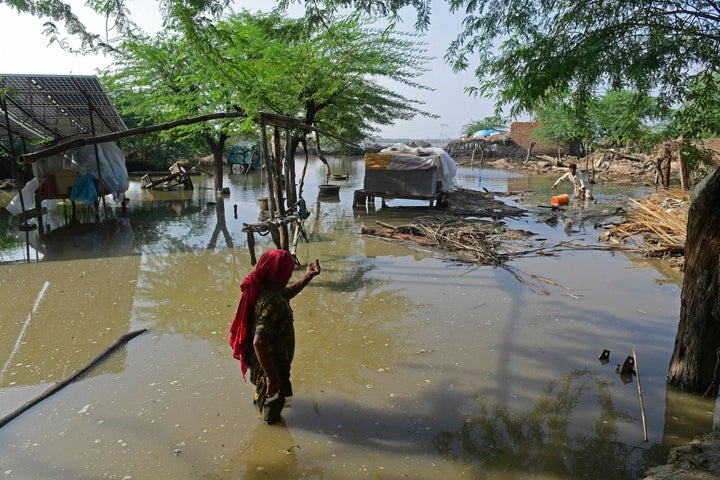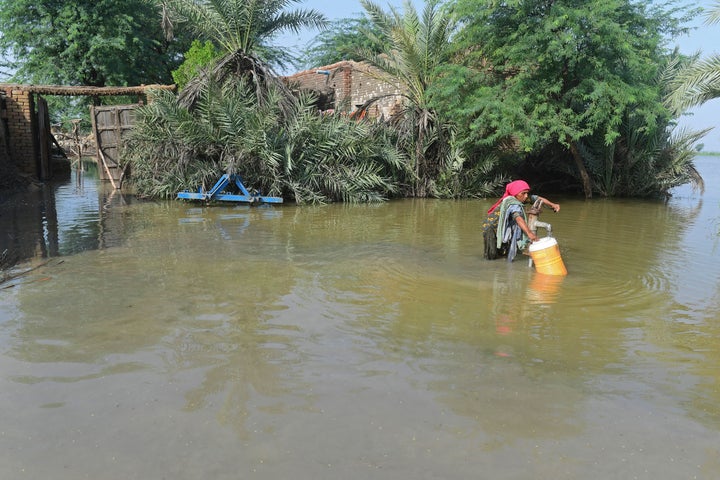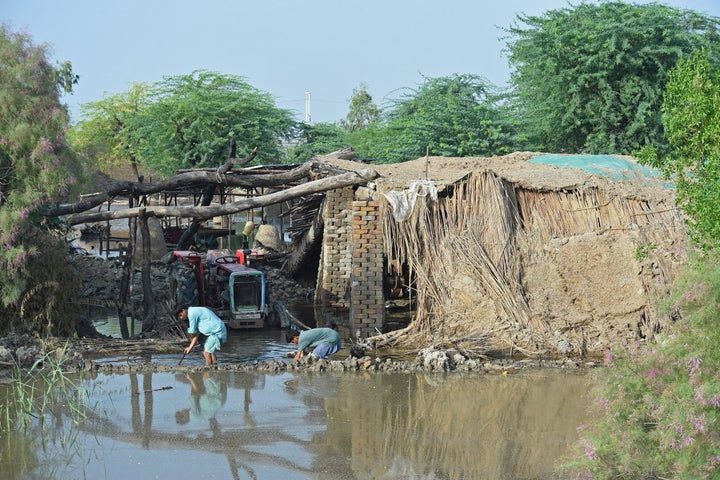
Devastating floods have swept across Pakistan in recent weeks, causing more than 1,000 deaths and affecting around 33 million people.
The country’s government has blamed climate change and called for all the richer nations to help, immediately, as they are responsible for the global crisis.
Here’s what you need to know.
What’s happened?
Flash floods have swept across Pakistan over the summer, causing a historic level of devastation, isolating villages and trapping many in mountainous areas.
It is the most rain Pakistan’s monsoon has seen in a decade, and has pushed one third of the country underwater with around 1,860 miles of road reportedly washed away.
“It’s all one big ocean, there’s no dry land to pump the water out,” Pakistan’s climate minister Sherry Rehman said.
She described the current crisis as a sign that Pakistan is “at the ground zero” of “flash floods, multiple glacial lake outbursts, heatwaves and now the monster monsoon of the decade”.
She added it was a “crisis of unimaginable proportions”, which has left at least 1,136 people dead since the monsoon season began in June.
A third of those dead are believed to be children.
One in every seven people (approximately 33 million) in Pakistan are believed to have been impacted, with many seeking shelter in the camps set up across the country. Access to food and clean water is scarce.
Rehman pointed out that the water levels have “exceeded every boundary, every norm we’ve seen in the past”.
Officials believe close to half of the country’s cotton crop has been damaged or washed away, while other crops have suffered too.
The last time floods were this bad was in 2010, the deadliest year in Pakistan’s history – more than 2,000 people were killed at the time.
There are concerns that the current crisis could worsen, considering the monsoon season started earlier than usual in June, and is still going as September approaches – it normally stops around the end of July.

Why is Pakistan particularly affected?
Pakistan is particularly vulnerable to climate change because most of the country lives along the Indus River, which comes from the Himalayas.
It often floods during the monsoon season, and these overflows have been worsening with the climate crisis in recent years.
There are also more glaciers in the country (away from the north and south pole) compared to anywhere else in the world, stored in the northern Himalayan regions.
So when temperatures almost hit 50C earlier this year in parts of Pakistan, many of those glaciers started to melt, forming around 3,000 new glacial lakes – many of which have already burst.
On top of that, the country has suffered from extremely high rainfall levels.
Pakistan did announce a state of emergency on August 25, but it’s difficult for any helicopters to deliver any aid to those who need it the most when there is no dry land.
The UN has allocated £2.6million for its agencies to respond to the crisis, but it has also criticised the country for not offering up to date information on glacial changes.
South Asia itself has also been called a “climate crisis hotspot” by UN chief Antonio Guterres, as people are 15 times more likely to die from climate impacts there.
“Let’s stop sleepwalking towards the destruction of our planet by climate change. Today, it’s Pakistan. Tomorrow, it could be your country,” he said in a video message.
What does this have to do with the rest of the world?
Pakistan has called for help to rebuild from aid agencies, allied nations and international donors. It’s thought putting the country back together will cost more than £8.5 billion, and take around five years.
The country is particularly determined for wealthier nations to pay for the crisis because, according to Pakistan’s planning minister Ahsan Iqbal, its “carbon footprint is lowest in the world”.
He added: “The international community has a responsibility to help us, upgrade our infrastructure, to make our infrastructure more climate resilient, so that we don’t have such losses every three, four, five years.”
He pointed out that areas which used to receive rainfall are now becoming dry, while the areas which used to have mild rain now flood.
However, Iqbal is waiting until the full scale of the damage is apparent before making any formal requests for help.
“We are seeing for ourselves on the ground that climate change is happening,” One official from the badly-hit city of Larkana told the BBC. “We’ve never seen such rains in one year... Now we need to think about how we build for the future – how do we even start?”
The global climate has already increased by 1.2C since the industrial era. Unless emissions are reduced, temperatures are only going to keep climbing.

